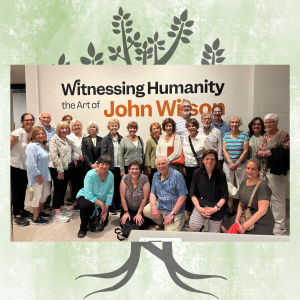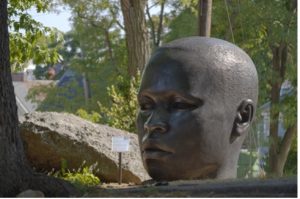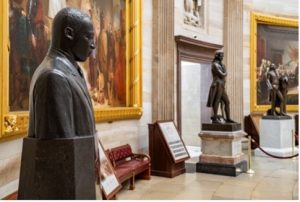
TBE’s Racial Justice Initiative at the Museum of Fine Arts
Witnessing Humanity is an apt description of the works of John Woodrow Wilson, one of Boston’s most prolific artists. On June 5th, twenty six RJI-ers were treated to a docent-led tour of the exhibit, learning about his life in Roxbury and the influential experiences that shaped and gave meaning to his art. Wilson was a painter, sculptor, muralist and art teacher whose works reflect the politically charged decades of the mid-to-late 20th century, portraying themes of social justice and racial inequality.
As with other RJI experiences in which we have explored and been exposed to elements of Black culture, I found myself struck again with how uneducated I am about iconic influencers and leaders like Wilson. Working in multiple media (equally effectively!), a common message is communicated: the beauty and dignity of Black people; the strong supportive and protective family bonds nurtured within the Black community; and a universal humanity with which we can all identify.
And now that I am aware of Wilson’s work, I am pleased to discover that I’ve actually seen his works displayed elsewhere. Just this week when delivering food items to Dorchester’s William Monroe Trotter Elementary School, we discovered Wilson’s portrait of Trotter in several paintings throughout the school. Numerous times I have passed Wilson’s monumental sculpture Eternal Presence driving down Walnut Street at Roxbury’s National Center for Afro-American Artists. And finally, on February’s TBE/RJI sponsored trip to Washington, D.C. we saw perhaps Wilson’s most viewed sculpture—the bronze bust of Martin Luther King Jr. in the US Capitol Rotunda. This magnificent memorial is the Capitol’s first sculpture honoring an African American, and the first ever by a Black artist.


Truly, John Wilson was a first among firsts in so many ways, a beloved son of Roxbury, and a teacher to all of us on our evening at the MFA!


